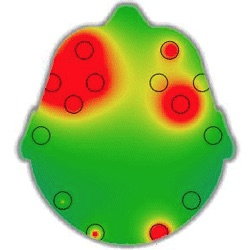If we did not believe that you can:
1. Improve your brain function,
2. Feel better,
3. Think more clearly,
4. Be more productive,
5. Work more efficiently &/or
6. Have a better life experience,
We would not do this work.
RBMD & The ABSC
Our mission is to do our best to reduce suffering, find better ways to reduce suffering and share what we know with others so that they can do it.
Motivated by the passion to safely reduce suffering, we are always open, curious and eager to learn. from Singapore to Honolulu to Boston to New York to Atlanta to Geneva to Durham to Vancouver, we have gone everywhere in the world where we could learn the best practices and advanced methods from brain scientists and other clinicians.
If you find a clinic anywhere in the world that offers 5 point quantitative diagnosis, advanced TMS and 5 different kinds of gentle electrical stimulation, please email us, we will go and learn from them if they let us.
If you are or know another clinician who is interested in learning what we do and how we do it, email them. we welcome others to come and learn from our experience. our guiding principle is compassion and diagnostic evidence based treatment, but we also unconditionally share with other doctors and students of clinical neuroscience and explore undaunted the frontiers of parameter space for those that have found no existing treatment effective.
American Brain Stimulation Clinic may be the first comprehensive outpatient brain stimulation clinic and may provide the most technologically advanced psychiatric and neurological treatment available. in addition to rTMS (magnetic brain stimulation) we offer five kinds of electric brain stimulation (tACS/CES, tDCS, Trigeminal, tVNS and urTENS), deep TMS, individualized frequency stimulation, theta burst stimulation and HRV (heart rate variability) measurement. We were the first center offering the frameless stereotaxic Neuro-navigation technology in southern California and the first in the Nation to provide TMS with the COBOT (TMS-cooperative Robot). Combined TMS-Ketamine treatment is available Tuesday, Wednesday & Thursday of each week.





























